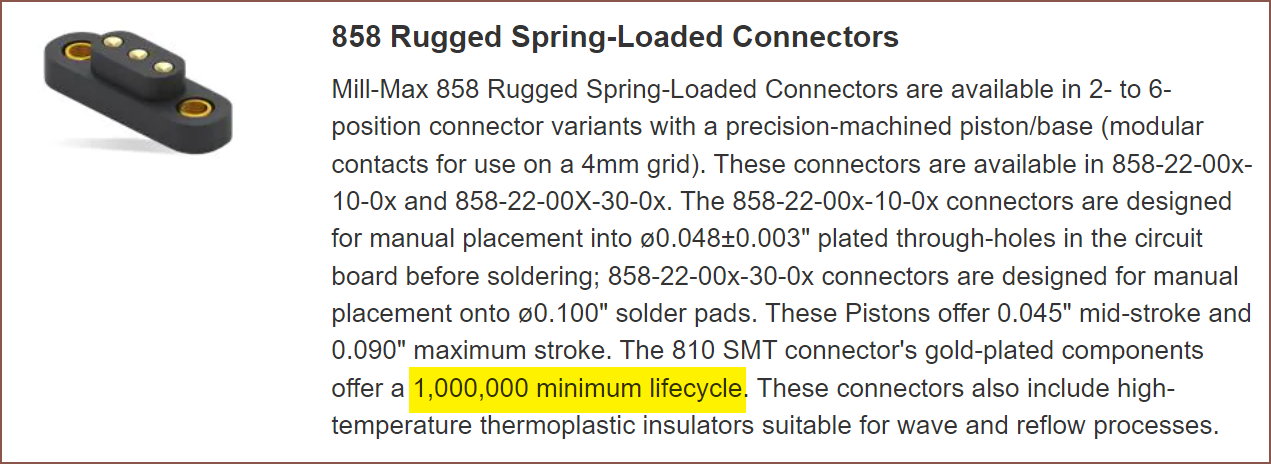For recurring costs and reliability (and probably physical space), the less pins I need to use, the better.
I'm thinking that
- +24V
- Main tool GND toggle
- Always-connected GND
- Thermistor
would cover my use cases, though a 5th one for nozzle/drill bit location sensing, as seen in the video below, would be a cool feature. If there's anything I can do to automate calibration, I'd like to further explore that solution.
I'm thinking that a wireless method such as NFC or IR could be used for controlling non-realtime features, like turning on an LED or fan on the tool that is powered by an on-tool regulator from 24V input. For mechanical actuation, such as the plunger for the chocolate tool, I'm thinking of utilising sensorless homing on the extruder motor to detect end limits. As for something like an inkjet tool, there probably wasn't ever going to be enough pogo pins anyway (the max is 6). Hmmm I wonder if those new CAN bus board things I've been hearing about could present a solution. I feel like that has the potential to drastically increase the per-tool price though. For the spindle, I'm thinking that the motor controller would have to be on the tool.
I'm planning to use the same style pogo connector as MihaiDesigns. I haven't yet been able to confirm that they allow up to 9A of current, but can confirm that they're rated over 1 million cycles.
 The pogo pin connector is more expensive than the pogo target connector, so the former will be on the Slime. Months (or maybe even over a year ago) I planned to do the opposite so that the "consumable" connector was on the removable component and I could make a PCB circuit that counted how many mating connections the tool had undergone, but swapped now due to the cost difference and high durability.
The pogo pin connector is more expensive than the pogo target connector, so the former will be on the Slime. Months (or maybe even over a year ago) I planned to do the opposite so that the "consumable" connector was on the removable component and I could make a PCB circuit that counted how many mating connections the tool had undergone, but swapped now due to the cost difference and high durability.I'm thinking of using solder cups for connectors on the Slime, but I'm undecided on using solder cups or SMD (essentially just a gold pad) for connectors on the tools; the solder cups are more expensive by about £1.30 and could take up tool space, but be easier to solder, especially when 2 or more wires need to be soldered to a pin. I'm likely to choose solder cups for that reason, as well as consistency.
 kelvinA
kelvinA
Discussions
Become a Hackaday.io Member
Create an account to leave a comment. Already have an account? Log In.
Most of those style connectors don't tell you the current limit. The few that do are usually pretty small (1-2A max). I have heard people talk about their personal projects and claim that their version could carry something crazy like 20A, but they didn't provide a BOM and I haven't been able to find anything like that. Good luck, and make sure you document where you found it if you do!
I had a similar thinking to you a while back and am currently waiting on USB PD 3.1 chips to hit the market. That does make the tool heads go up in price quite a bit, since they likely need a full fledged MCU, but it makes it where I can ask for any reasonable voltage/current, and don't have to worry about what happens if I need a new type of pin.
Are you sure? yes | no
Most I've seen are in the 1-2A range too, with 1 I think at 3A. Those were 2.54mm pitch and these are 4mm, so maybe the current capacity is higher. All I know is that the solder cups are designed for 16 AWG wire, but the currents I found [https://www.multicable.com/resources/reference-data/current-carrying-capacity-of-copper-conductors/] were way higher than 9A.
I'm currently looking into CANBUS and it sounds expensive.
Are you sure? yes | no
Found where MillMax states 9A current: https://www.mouser.co.uk/datasheet/2/273/019.78-1536786.pdf
It's rated for 9A at 30 degrees C and "up to 1M cycles" for the 868 (solder cups), and not sure why the 858's would have a higher durability of "min 1M cycles" in the Mouser description when the datasheet says otherwise: https://www.mill-max.com/catalog/download/2019-12:019.75.pdf
Are you sure? yes | no
always trust the datasheet over the fields. The fields are often put in by people at mouser/ digikey, sometimes using automated pdf readers. I've personally found and reported mistakes (which were manually corrected pretty quickly to their credit). The datasheet is the only thing guaranteed to be done by a human who has actual knowledge.
Are you sure? yes | no